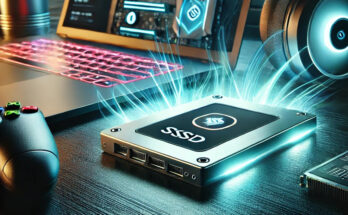The iPhone 15 Pro is poised to redefine the gaming landscape, blurring the lines between mobile and console gaming. Apple’s recent focus on gaming during the iPhone 15 launch event unveiled some exciting developments. In addition to improvements in hardware and software, the iPhone 15 Pro is set to welcome top-tier console games like the Resident Evil 4 remake, Resident Evil Village, and Death Stranding into its gaming library. This move challenges the traditional boundaries that separate dedicated handheld gaming devices, such as the Steam Deck, from smartphones.
Furthermore, Apple announced that the highly anticipated Ubisoft title, Assassin’s Creed Mirage, will also be available on the iPhone 15 Pro. Notably, the device will support hardware-accelerated ray-tracing for dynamic lighting effects. This marks a significant expansion of the iPhone’s gaming capabilities, which originally transformed the industry when it opened its doors to third-party developers. Today, mobile game developers dominate the industry, but they haven’t quite encroached on the territory of console makers and PC gaming, a market even the Mac has struggled to penetrate over the years.
With the iPhone 15 Pro, Apple has a genuine opportunity to establish itself as a premier destination for major studio game releases. The A17 Pro chip powering the iPhone 15 Pro is on par with the processors found in devices like the Steam Deck, Asus ROG Ally, Lenovo Legion Go, and other portable console PCs. Coupled with accessories like the Backbone One USB-C controller, which has announced support for the iPhone 15, the iPhone 15 Pro could make standalone gaming hardware obsolete.
However, challenges remain. iOS as a development platform still lags behind Windows, but Apple is working on improving compatibility through tools introduced at its WWDC developer event. More importantly, Apple must build and maintain strong relationships with game developers, a task traditionally handled differently than by console hardware companies like Sony and Microsoft. Apple Arcade, launched a few years ago, demonstrated progress in this regard, but it may need further refinement.
Additionally, the focus on the Pro model this year may limit the reach of Apple’s gaming ambitions compared to including the standard iPhone in the mix. Nevertheless, the A17 Pro is likely to trickle down to lower-tier iPhones in the future, ensuring that gaming capabilities continue to expand rapidly, potentially outpacing the development cycles of traditional gaming consoles like the Steam Deck.
Beyond its technical prowess, the iPhone 15 Pro’s support for video output and broad compatibility with multiple manufacturer controllers means it could potentially replace not only handheld AAA consoles but also living room gaming systems. The iPhone 15 Pro’s appeal as a gaming platform continues to grow, and it may be the generation that blurs the lines further, making “Coming to PS5, Xbox Series X, and iPhone” a common phrase in the gaming industry.




